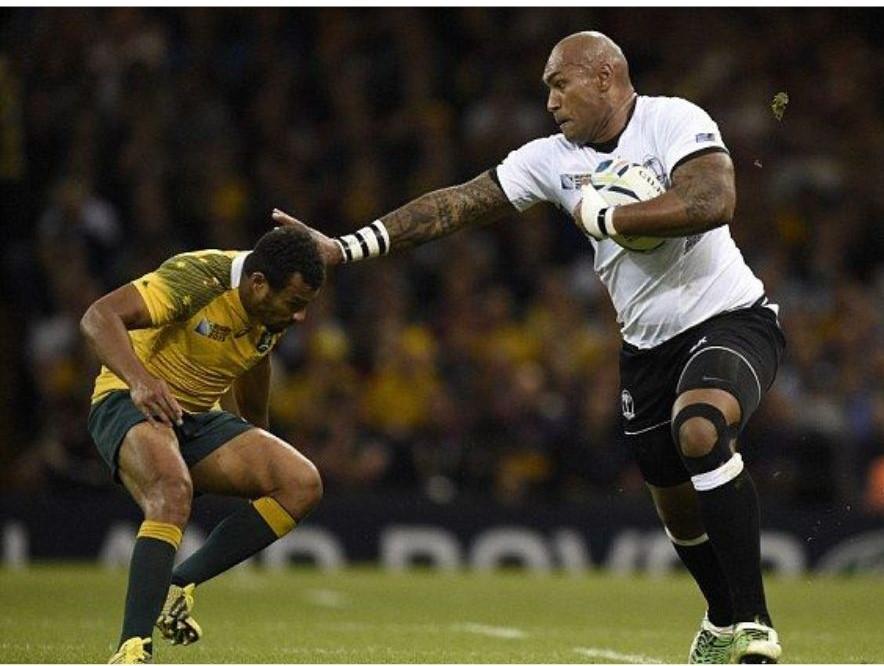Rugby, in simple words, is mostly like 90% football and 10% soccer. The game was altered in the United States in the early 1900s. Some rule changes were made to the English rugby version by adding padding, helmets, blocking, time-outs, forward passing, and play-making huddles. This gradually transformed rugby into American gridiron football.
If you’re familiar with football, rugby will be straightforward for you.
Rugby Scoring
- You score 5 points by getting a touchdown, called a try. To do this, you run into the end zone with the ball and “touch it down.” It’s like “spiking the football” in American gridiron.
- For 2 points, you kick after the touchdown. Just like in American gridiron, the ball is on a tee, and you kick it through the goal posts for 2 extra points. So, a try and the kick together give you 7 points, similar to football.
- You get 3 points by kicking a field goal. There are more field goals in rugby compared to American Gridiron, mainly because of a rule. When there’s a big penalty in rugby, the defence steps back 10 yards, but the offence doesn’t move up. Play pauses until the ball is put back into action. But when a team is within 45 yards of the goal posts, a strong kicker may try to kick for 3 points. The defending team can’t rush the kicker or block the kick. If the kick misses and the ball is on the ground, it’s live, and either team can try to pick it up.
Sometimes, you’ll see a drop goal, also worth 3 points. During live play, a player drops the ball on the ground and kicks it just as it hits the grass, like a drop kick. The defence can try to block this kick. If the kicked ball goes through the goalposts, the offensive team gets 3 points. If it’s missed, the ball is live, and either team can try to run for it.
Rugby Game Basics
- Each team has 15 players.
- No blocking is allowed.
- The ball can only be passed backward.
- You can only tackle the player carrying the ball.
- When tackled, you intentionally let go of the ball and place it gently on the ground.
The ball carrier and tackler must not touch the ball. They must either roll away or lie still to let the game continue.
- After the ball is released, any team can pick it up.
- If a player runs faster than everyone else, they just grab the ball and keep running.
- Usually, two or three players from each team arrive at the breakdown (where the ball is loose) together. They form a ruck by staying on their feet, grabbing each other, and pushing hard to gain an advantage and push back the opposing team.
- This creates a small pushing match with three players from each side, forming a new line called a scrimmage line. The entire defence must move behind this line. While the ruck pushing is happening, the ball can’t be touched by hands until it’s won.
- Winning the ball involves pushing opponents back a step or two off the ruck, positioning the ball behind the offensive players’ feet at the ruck. If the pile is stuck and can’t be pushed over, either team can use their feet to roll the ball backward and win possession that way.
- Once the ball is behind the ruck, the scrum half, like the rugby quarterback, picks it up. The scrum half then passes it backward to players standing behind.
- This continues for 80 minutes non-stop. After the initial tackle, everyone, regardless of size or speed, is involved in all parts of the game. Everyone runs, tackles, plays offence, and defence without substitutions.
- In moments when the ball isn’t in play due to minor penalties, a scrum is formed. This is a classic image of rugby, where eight players from each team come together tightly in an eight-man pack. They create a well-organised and evenly set scrum, which is similar to a ruck but happens after a dead ball penalty. Both teams align about one yard apart, as directed by the referee’s instructions, similar to the snap at the start of a football play.When the scrums collide as instructed, they compete to win the ball placed in the centre of the scrum from the minor penalty situation. The team that wins the scrum gains possession and quickly passes the ball to the backs positioned behind the scrum. Then, the race begins again to see which team can reach the tackled area first.


